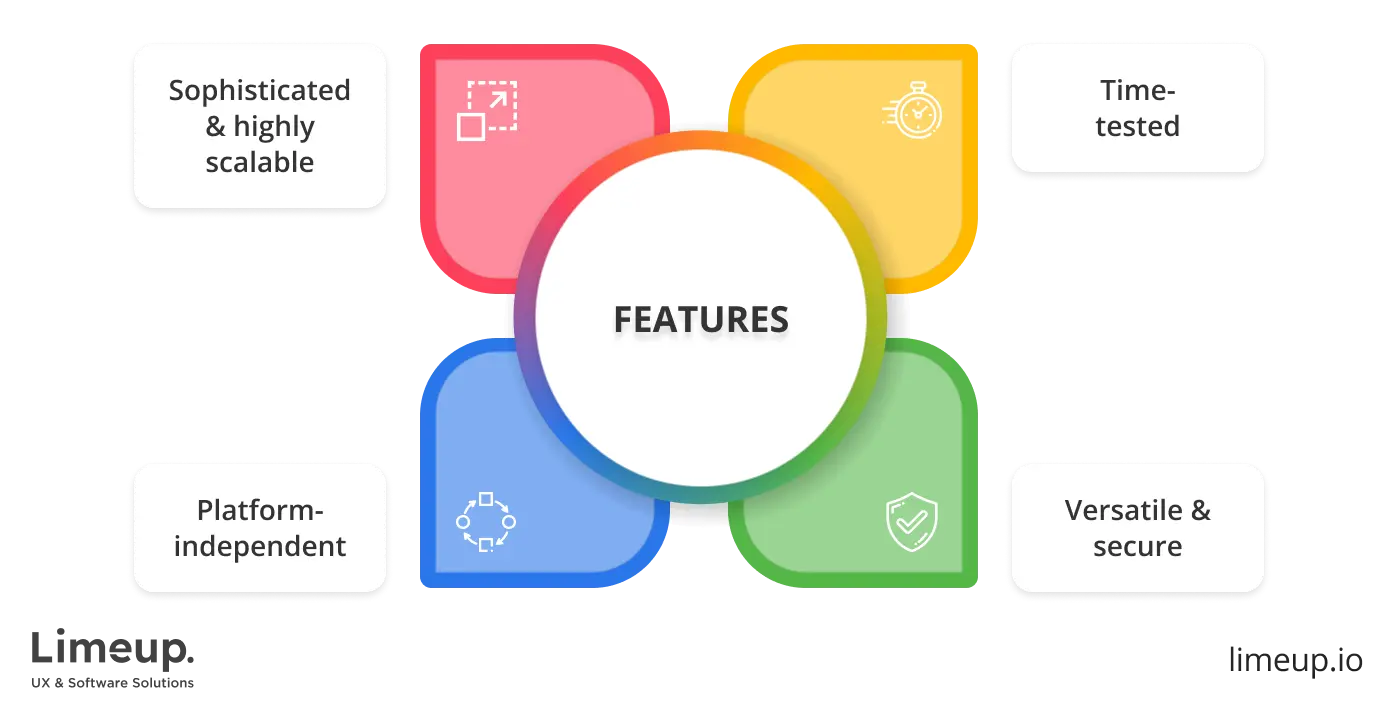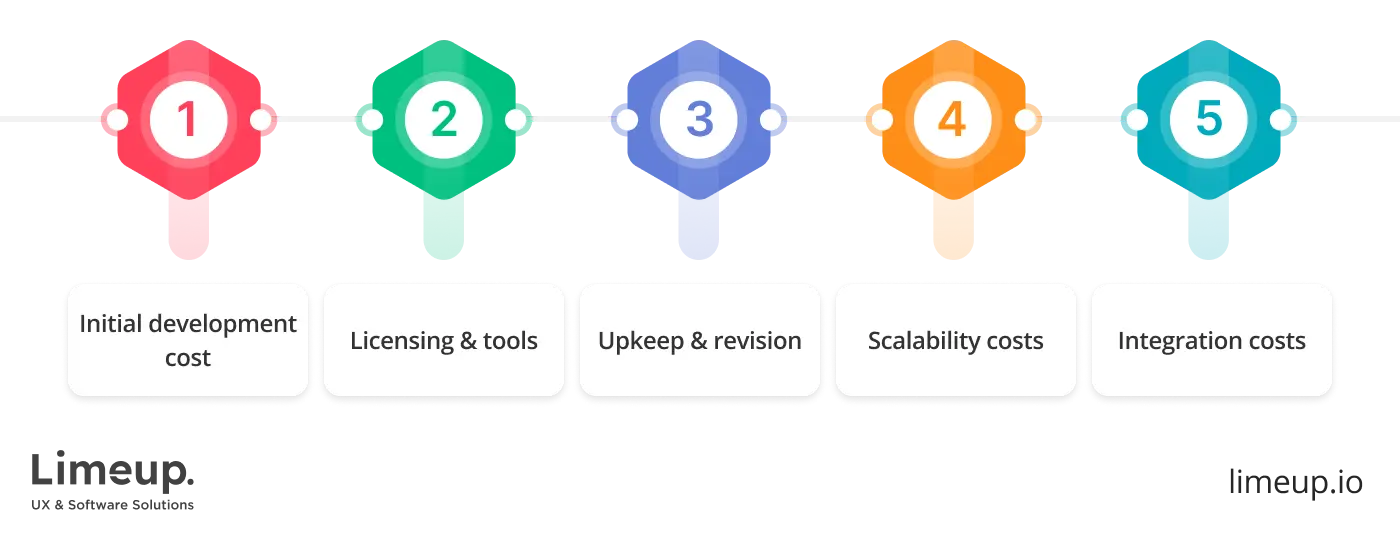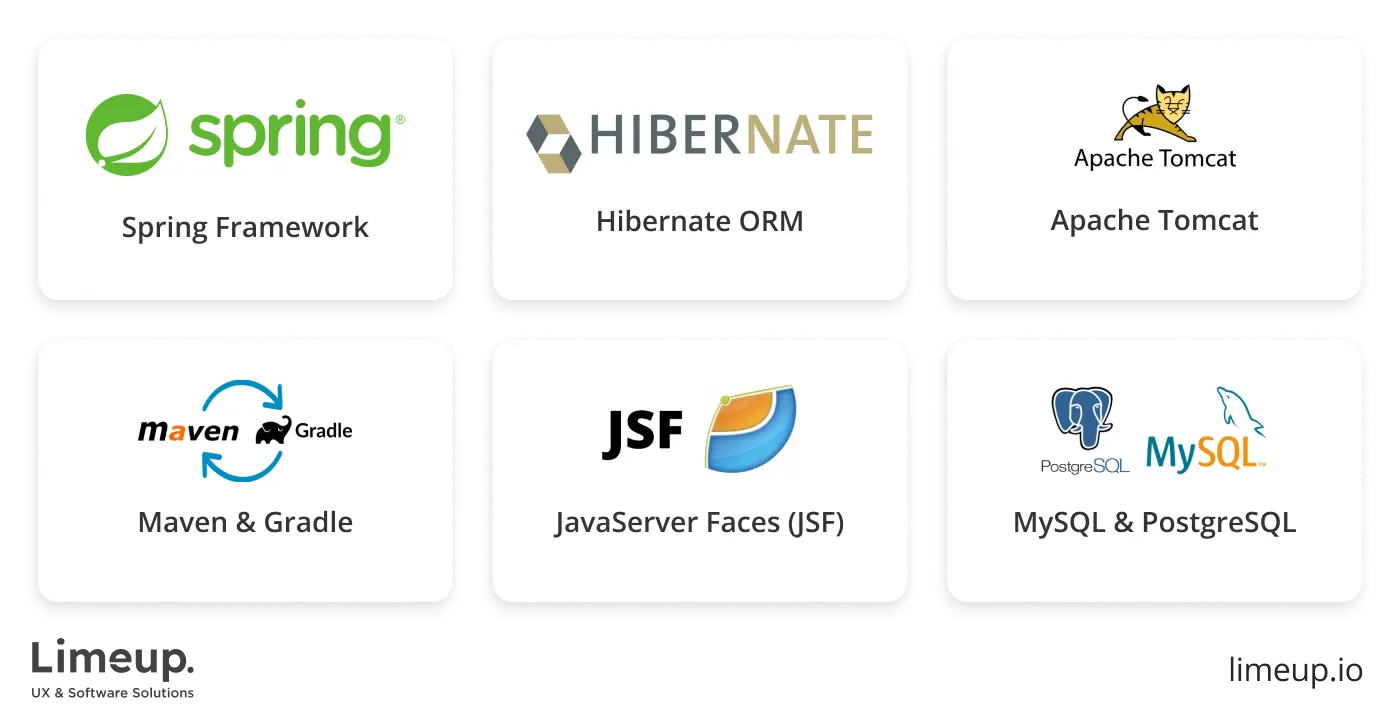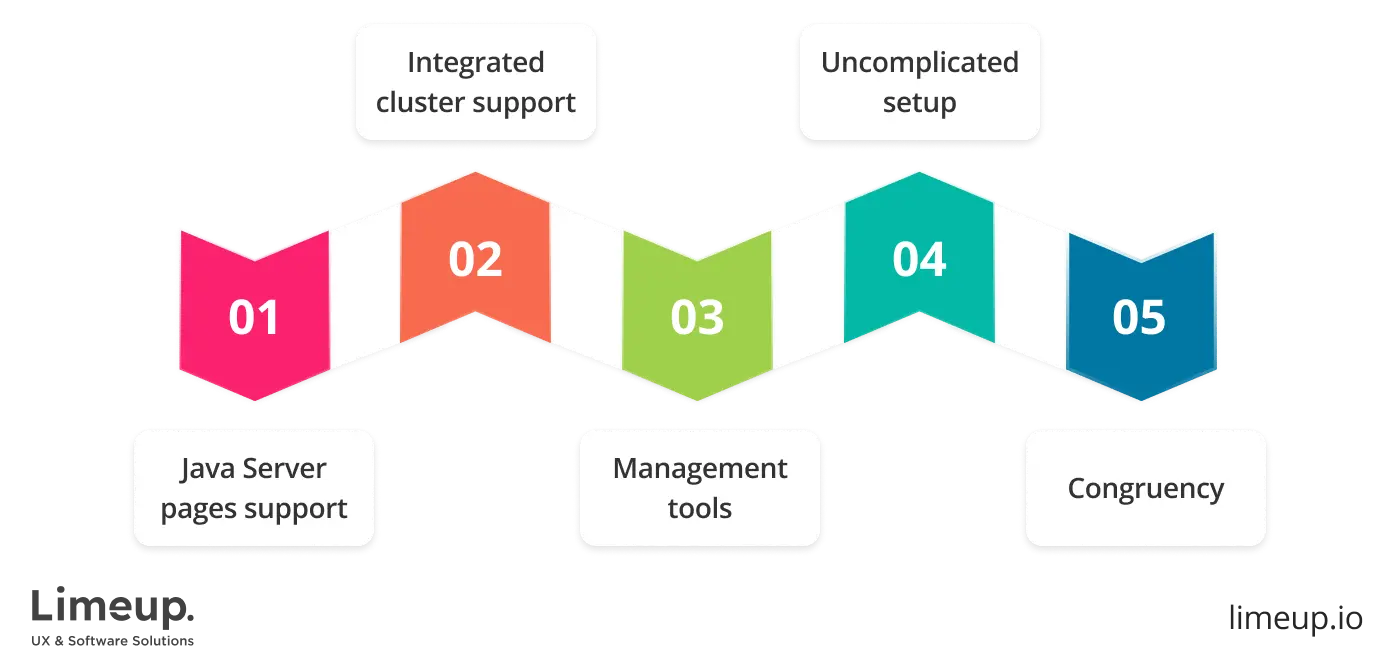Java Web Development: Ultimate Overview

Entering the expanse of Java web development is like stepping into a universe of limitless possibilities and unimaginable options. Java is a most powerful and versatile programming language through which software engineers are capable of developing strong and multi-featured web applications. Java may be used to develop anything from simple dynamic websites to complex corporate systems and applications because of its reliability and speed.
Getting started on web development using Java may be a breeze due to the many libraries and frameworks available. Frameworks such as Spring, Hibernate and JSF allow developers to create great applications and enhance performance as well as user experience. Java has a complex environment that enables coders to turn their ideas into working solutions and make all of the projects perfect.
Developers are the architects of Java website development, bringing creative concepts to life as fully functional, future-ready websites. Let’s examine the advantages, challenges and difficulties of development using Java, along with a comparison with Python, in order to provide you with a thorough grasp of which language is most appropriate for your project.
What is Java web development?
Web creation with Java has been popularized since the late 1990s and has remained a rock-solid solution for developing dynamic web applications. As the saying ”old is gold” claimed Java programming is indeed an embodiment of this in contemporary technology. For the big business players, such as Amazon and eBay that drive e-commerce, Java was instrumental in building some of the most sophisticated and highly scalable web applications known to man.

Java’s versatility has been one of the main factors in its continued success in web development. If you’re curious about how to make a website with Java, it’s worth noting that this programming language has changed over time to adapt to the constantly shifting necessities of the digital world.
Moreover, Java web production instills a level of confidence in industries that handle a great deal of very sensitive data. For instance, PayPal hit the headlines by enhancing its online payment system using Java. With Java’s security protocols, PayPal managed to develop a protected web environment that kept people’s financial information safe, hence establishing trust and credibility in the highly competitive online pay industry.
It can be further mentioned that web development using Java is platform-independent. The expression “write once, run anywhere” aptly encapsulates Java’s versatility in functioning on several operating platforms, including Windows, macOS and Linux. It proved to be particularly useful at the turn of the century when businesses started to go international in terms of their virtual presentation.
In other words, Java web dev means utilizing a time-tested, versatile and secure platform for building web applications which are able to deal with the digital cruelties of the modern digital world. There are numerous instances when Java has shown to be a dependable workhorse in web development, such as when it controls the backend of a large international e-commerce site or conducts financial transactions for millions of users.
Cost of web development with Java
All basics about web development with regard to the cost of Java should be looked at in terms of cost and overall value in the long run. You get what you pay for and when it relates to Java, the price can match the powerful, scalable and secure solutions created by Java development companies. Below is a breakdown of what you might be paying for:

Initial development cost. Java web developers are normally paid more compared to the other developers because of the special skills needed in the course. The cost of development may also depend on the programmers’ wages and as of 2024, Java developers in the USA earn an average of $100,000 per year. While recruiting experienced Java engineers is rather costly, it is generally resulting into far more robust and easily maintainable code.
Licensing and tools. To recall, Java itself is open-source and free, while certain tools and frameworks which are helpful in developing Java web applications notably Oracle JDK or, for instance, specific paid versions of Integrated Development Environment IDEs like IntelliJ IDEA, may be paid. In this regard, Oracle JDK’s subscription model, introduced in 2019, may increase costs, particularly for larger teams or businesses.
Upkeep and revision. Java applications work more like a well-greased machine, which needs attention regularly. Java systems are very reliable, but constant enhancements, correction of defects and optimization always involve perpetual money outlay. For instance, good old systems that were developed in Java in early 2000 will need updating to match competition increasing overall costs.
Scalability costs. The usage of Java in web development gives the ability to scale and it is one of its greatest strengths, but with great power comes great responsibility and cost. Whenever you have employees involved in service provision, there will also be growth in the overall cost of web application hosting, databases and cloud services among others. To give an example, complex Java is used by Netflix, the leading streaming service whose content distribution network is beyond comparison.
Integration costs. Java’s adaptability is both a blessing and a curse — although it makes integrating different technologies simple, connecting to legacy systems or third-party services may result in increased expenditures. The New York Stock Exchange integrated a Java-based platform into its trading systems in 2004, upgrading some of the older ones.
Such web development services were not cheap and were a large expenditure but the reward was a better and stronger trading system in place.
Here is a table of average prices for Java development:
| Cost factor | Details | Approximate cost |
| Development team | Expenses for employing Java experts, such as perks and salary. | Junior developer: $60,000 – $80,000/year Senior developer: $100,000 – $150,000/year |
| Licensing and tools | Costs for licenses of development tools, frameworks and other essential software. | IDEs and tools: $500 – $2,000/year per developer |
| Upkeep and revision | Ongoing costs for maintaining, updating and supporting Java applications post-deployment. | Maintenance: 15-25% of the initial development cost per year |
| Scalability cost | The fees that come with growing Java applications such as higher database and hosting costs. | Additional hosting/database: varies by scale, Scaling infrastructure: $10,000 – $100,000/year |
| Integration costs | Charges associated with Java integration with off-the-shelf systems or outside services. | Integration with legacy systems: $50,000 – $200,000 per project |
Tech stacks used for Java website development
Creating a solid Java site involves a lot more than just knowledge of the language, you need to find the right tools for the job. The reliable frameworks, quick databases, and effective tools used in the creation of Java websites function together like the instruments in a relay orchestra. Here’s a look at the key components:

The Spring Framework is the go-to choice for those intending to build a Java website, especially when constructing complex, enterprise-grade applications. Large companies like Netflix and eBay, whose operations revolve around Spring technology, find it indispensable since it provides everything from dependency injection to strong security measures.

A strong point of this framework is that it is rather flexible and has a large number of dependencies, which makes it popular among Java developers who are working on web applications that should have a high degree of scalability and security.
In the case of databases, Java developers have Hibernate ORM (Object-Relational Mapping) in their hands as their trump card. Hibernate is a framework developed in 2001 aimed at decreasing the difficulties of database integration in the development of Java applications and providing Java objects and database table mapping.
To manage its vast product catalog, customer data, and order history Hibernate is used by Amazon to make sure that intricate data linkages are seamlessly integrated across multiple services.
No web application developed using Java may be complete without the use of an efficient web server thus Apache Tomcat becomes the most popular web server. Tomcat has been around the block and was started in 1999 — it is one of the best workhorses for servers. Java and web development with Apache provide support to numerous popular websites including the sites of such large companies as Alibaba.

With 48% of developers using it, Apache Tomcat is the most widely used Java application server, according to the poll. Some of the great attributes that make Tomcat popular among programmers is because of its small size and modularity to execute Java applications easily.
Maven and Gradle appear to be inseparable when it comes to the construction of Java projects and their further administration. Maven which came into force in 2004 and Gradle introduced in 2007 are both build management tools that assist in managing complex projects by providing solutions to tasks such as dependencies, compiling and testing.
Large-scale projects of all kinds are commonplace these days. Google, for instance, uses Gradle to construct substantial Java projects and to ensure everything is completed on schedule and in accordance with size.
JavaServer Faces (JSF) is a widely used framework available to developers who need to create Java website user interfaces. According to JSF, the construction of unit interfaces is divided into elements – components, created to resolve the problem of complex interface creation without reconstruction of the existing solution.
NASA is a well-known organization that uses JavaServer Faces (JSF) in several of its mission-critical applications. NASA’s advanced software systems choose the framework because of its ability to manage complicated user interfaces and guarantee reliability in high-stakes scenarios.
In the field of databases MySQL and PostgreSQL are ideal as an addition to applications that are created in Java. MySQL was founded in 1995 and PostgreSQL originated in 1986 — the two are open-source relational databases that have proven their resilience.
Twitter uses PostgreSQL to store vast amounts of data, which include over 500m tweets, with a relatively easy and quick retrieval speed. Due to their stability and credibility these databases are widely used for Java-based web applications.
Main benefits of Java web programming
Looking at the web programming aspect, Java has been as strong as a mighty machine that has not lost its power and efficiency over the years. This makes Java web engineering to be advantageous in the following ways thereby making it to be popular among businesses and developers. Let’s explore some of these advantages:

-
Platform independence. The platform’s Java compatibility ensures that Java programs may be developed and run on any operating system without the need for reconfiguration.
A good case in point is Twitter using Java in various systems to guarantee scalability and performance across the platforms. Because of its adaptability to any environment, it has made it possible for a Java web developer to construct applications that are responsive to any future incidents.
-
Robust security features. Security is a primary concern in web development and Java delivers in spades. More than 80% of Fortune 500 businesses use Java as of 2024, implying its reliability and security in business operations.
Java has several other features that are also related to security issues, like Automatic Garbage Collection and the Security Manager which controls access to resources and safe memory management.
-
Scalability and performance. The implementation of Java in web development empowers you with strength that is endurable like muscle which is used and gradually strengthened. From small business startups to multinational organizations, Java runs them without a problem. Take Netflix, for example — it also relies on Java to manage its extensive content delivery network to function well regardless of traffic load.
Java has the capability of handling big applications as well as can manage the heavy traffic volume which makes it a preferred choice for enterprises that are planning for growth but don’t want to hit the performance issues.
- Extensive ecosystem and libraries. Java has one of the most diverse ecosystems of the given programming languages where developers are able to find a lot of libraries and frameworks that make the processes as smooth as possible. Since Java appeared in 1995 it has collected a very fine number of tools like Spring, Hibernate, and Apache Struts, tested in real projects.
-
Community support and continuous improvement. When you set out to build a Java website, you’ll benefit from the active and creative community of users who constantly contribute to enhancing the language. Java has an organization called Java Community Process (JCP) through which the language continues to grow, as well as adapt to the current trends and development.
The active community around Java also entails that developers get the kind of support they need from forums, tutorials or open-source contributions. These constant updates of characteristics and support make Java current and usable for all the current needs in web development.
-
Integration capabilities. Versatility makes Java compatible with other technologies and systems to a large extent. From connecting with traditional infrastructure to core-level cloud environments, interoperability of Java cannot be compared to any other. The ability to play well with others makes Java a top choice for businesses with complex, multi-faceted tech environments.
Key challenges to create Java website
Java has been at the heart of web development for years now, but while easing the process it does bring certain problems. There are some of the challenges that should be well understood in order to avoid them or at least to know how to handle them. Here’s a look at some of the key challenges faced in Java web dev:

Complexity of frameworks. Java has a vast population of frameworks and the most common ones are Spring, Hibernate and Java Server Faces (JSF). However, these frameworks provide a number of features, and at the same time may be difficult to comprehend by developers and are very complex.
- Learning curve. The mastery of more than one framework indeed consumes time and a lot of effort when Java for website development is used.
- Integration issues. At times different frameworks may conflict with each other causing problems of integration.
Performance overheads. Java applications are generally very stable, although problems may appear in terms of performance in large-scale systems. Although useful, Java’s memory management may occasionally end up in inefficiencies if it is not adequately tuned.
- Memory consumption. Unfortunately, Java’s Garbage Collection does not follow a fixed schedule and that leads to delays that in turn slow down programs.
- Scalability challenges. Arguably, it may become challenging to achieve performance best results as applications proliferate.
Compatibility and legacy code. The use of older versions of Java in the construction of legacy systems may cause compatibility problems with new technologies. Another issue is how to update these systems and at the same time avoid interference in the operation of other systems.
- Backward compatibility. The newer versions of Java sometimes bring certain incompatibility issues which becomes problematic.
- Code refactoring. The transformation of code to correct past decision-making deficiencies may also be time-consuming and prone to error.
Security concerns. Java web programming has great security options for developers but the issue is that they still have to remain vigilant against security risks. Security lapses may have detrimental effects, particularly in sensitive applications.
- Vulnerability management. To eliminate the security problem applying the security patches and updates is crucial in protecting the applications.
- Secure coding practices. Making sure the code has not been written with easily exploitable holes is a limiting factor that remains even to this day.
Tooling and ecosystem fragmentation. Java is rich in tools and there is a multitude of libraries available, however, some of the tools are incompatible with others. Selecting the tools and maintaining them is quite a challenging process.
- Tool compatibility. The disadvantage of using different tools is that they may be incompatible resulting in possible problems that may occur in the development and use of an application.
- Ecosystem overload. There is a large number of tools and this makes it very hard to determine which tool is best suited for a given project.
Java vs Python for web development
Java and Python have been the two most debated languages for some time with each language having its pros and cons and special features. That being said, it is time to have a closer look at the core differences and determine which language will fit your project most effectively.

Java: Urgent and fast, Java for website development is definitely one of the top options for those who need to build performance-related applications. It is compiled, and this implies that code is translated into machine language, which makes Java applications run faster. It has made Java the backbone of enterprise-level applications since its inception in the mid-90s.
Python: Python is an interpreted language and this may delay the finishing time. Nonetheless, Python’s ease of use and readability have a chance to compensate for its slower pace, particularly in smaller-scale projects. Python is being used more and more in sectors like data science and web development because of how simple it is to use.
Java: The syntax of Java is rigid and wordier than others that exist in the market, therefore, it is harder to learn by new developers. However, this strictness helps in avoiding the majority of the mistakes, this is quite beneficial in large complex projects.
Python: Python has been advised to be the best language to learn owing to its simplicity in syntax. Such simplicity makes Python a favorite of most learners and since it enables the developer to write code fast productivity is enhanced.
Java: Java has a rich and very well-developed base which includes numerous libraries and frameworks for different purposes starting from web development and up to the most complex enterprise-level applications. Java has been a mature language for many years and is highly standardized, which translates into having a great number of very good tools for almost any application domain.
Python: Comparing Java vs Python web development it should be mentioned that Python also has a strong and vast collection of libraries with machine learning and data science among the most popular ones with TensorFlow and Django for web development. Because of Python’s flexibility, developers are able to incorporate different tools and libraries into their projects.
Java: Unlike other web platforms such as Ruby on Rails, Java is incredibly useful in complex, enterprise-level web applications. Due to the capabilities of Java Virtual Machine, Java is also used in further development of complicated distributed systems.
Python: Python is flexible but is known for being the go to language for creating a quick application or tool or anything that requires heavy math computation. It is easy to use for development, easy to scale and change – it is perfect for startups and small to medium scale projects.
Java: Java is quite an old language which therefore means there is a large and well-developed community of Java web developers. This leads to extensive documentation, a great number of tutorials and an abundance of developers who can lend you a hand.
Python: Python’s community is vast and is expanding more due to its versatility in the newly arising field such as data science. Python is widely accepted and evidently has a very friendly community that may easily assist new learners. In the space of under a decade, albeit a few years younger than Java which was released in 1991, Python has had a meteoric rise in terms of acceptance.
Java for web development: conclusion
As we have so proudly reached the end of our journey into the world of Java web creation, we may confidently confirm one important truth: this programming language is not just another handy instrument in a programmer’s belt — it forms the basis of numerous worldwide web applications. Starting from the humble beginnings of dynamic websites to the intricate architectures of enterprise systems, Java has shown, time and again, its power as a reliable working horse that steers innovations and makes systems foolproof.
Java web engineering is akin to walking through a well-trodden path where each point on that pathway has the support of decades of the community, exhaustive libraries and an open-ended progressing space. Some more advantages of Java are its reliability, security and platform portability that make Java a most suitable option for business enterprises which will not take the risk of compromising on their online reputation.
Summing up, when deciding on using Java for web development you may feel confident as if you are betting on an experienced winner. Among the variety of platforms Java remains a solid ground on which developers are able to rely in the cut-throat world of web development. It’s a decision rooted in the knowledge that while the path may be challenging, the rewards are plentiful — powerful, scalable and secure web applications that stand the test of time.

